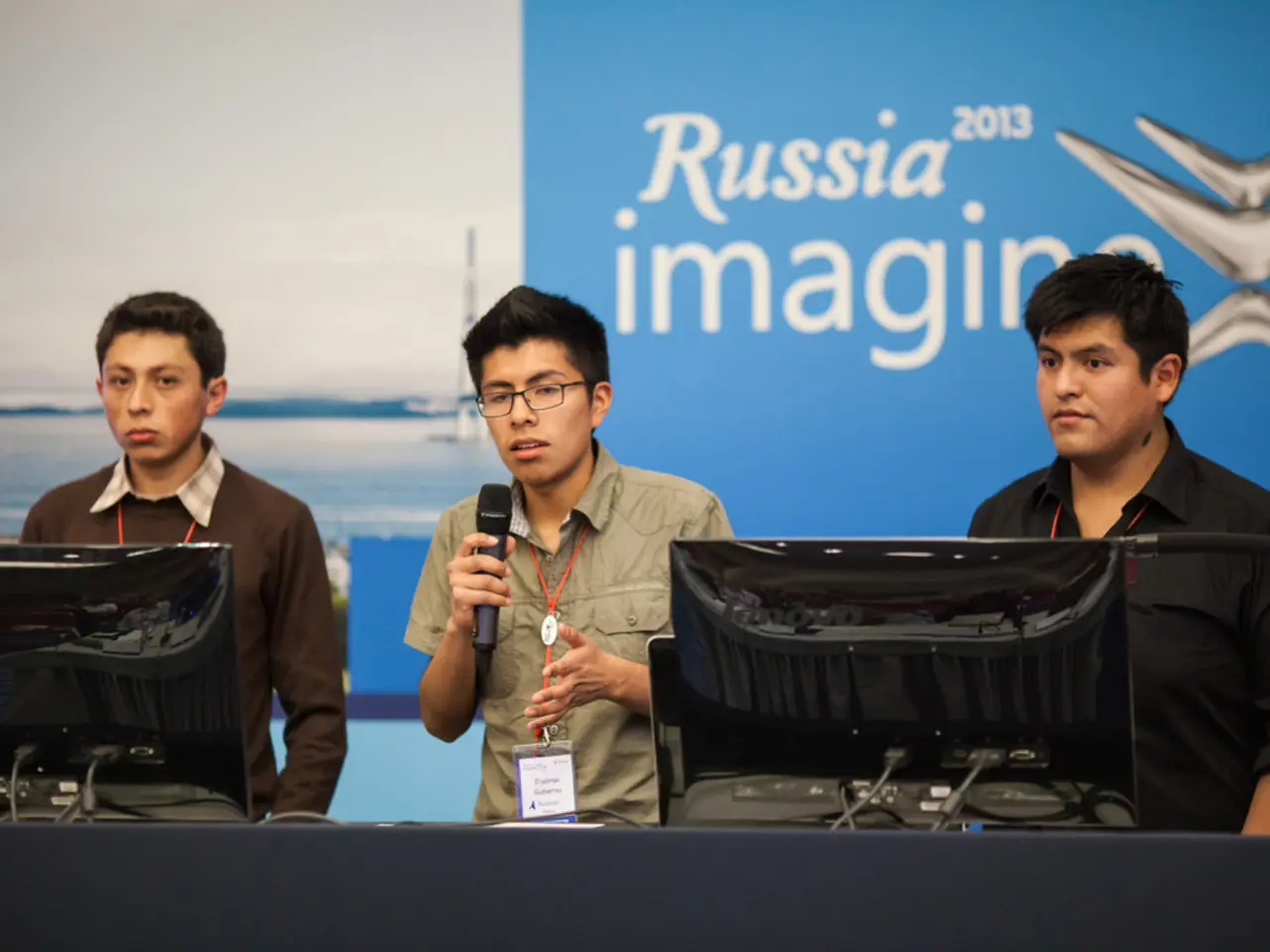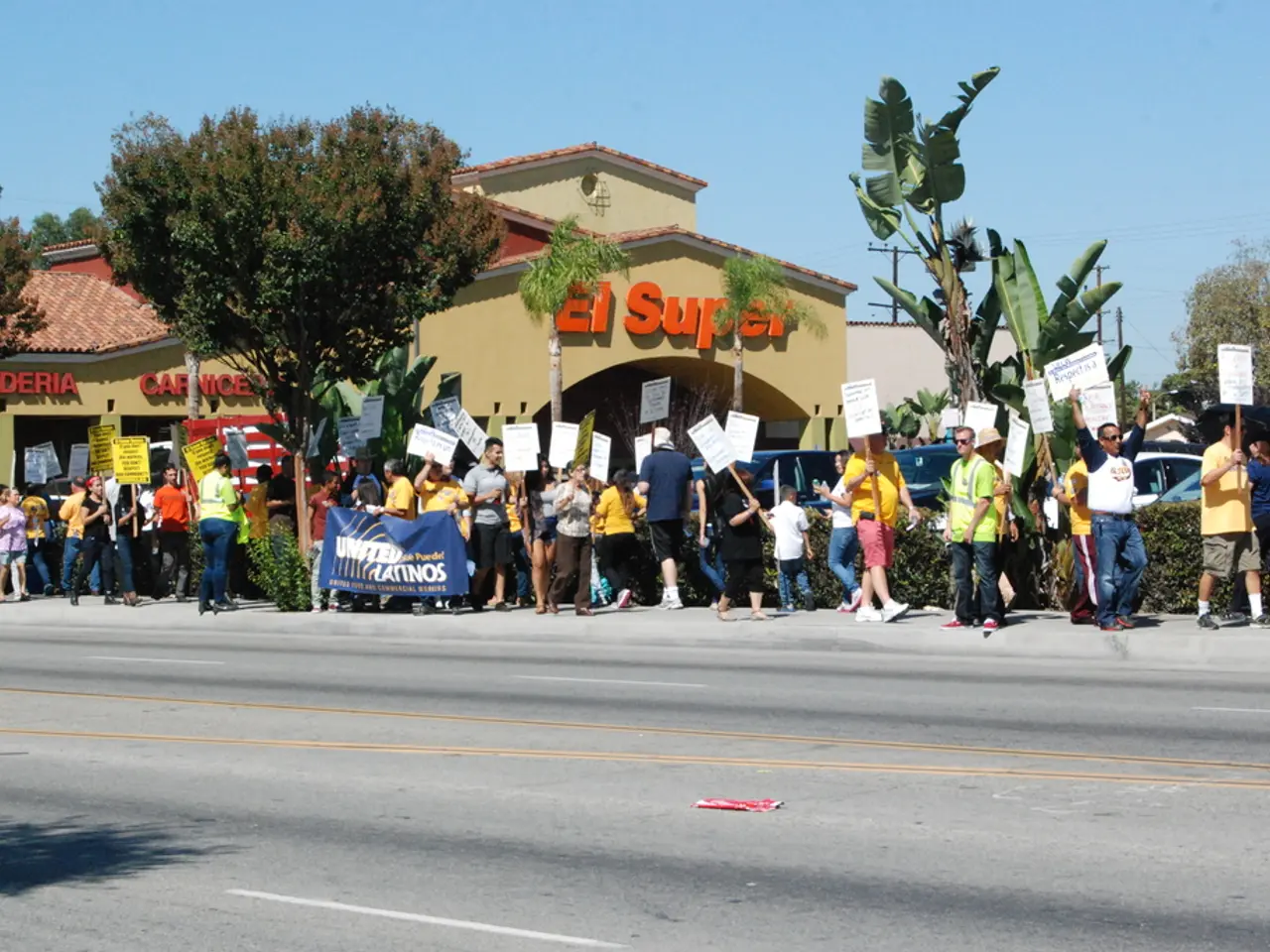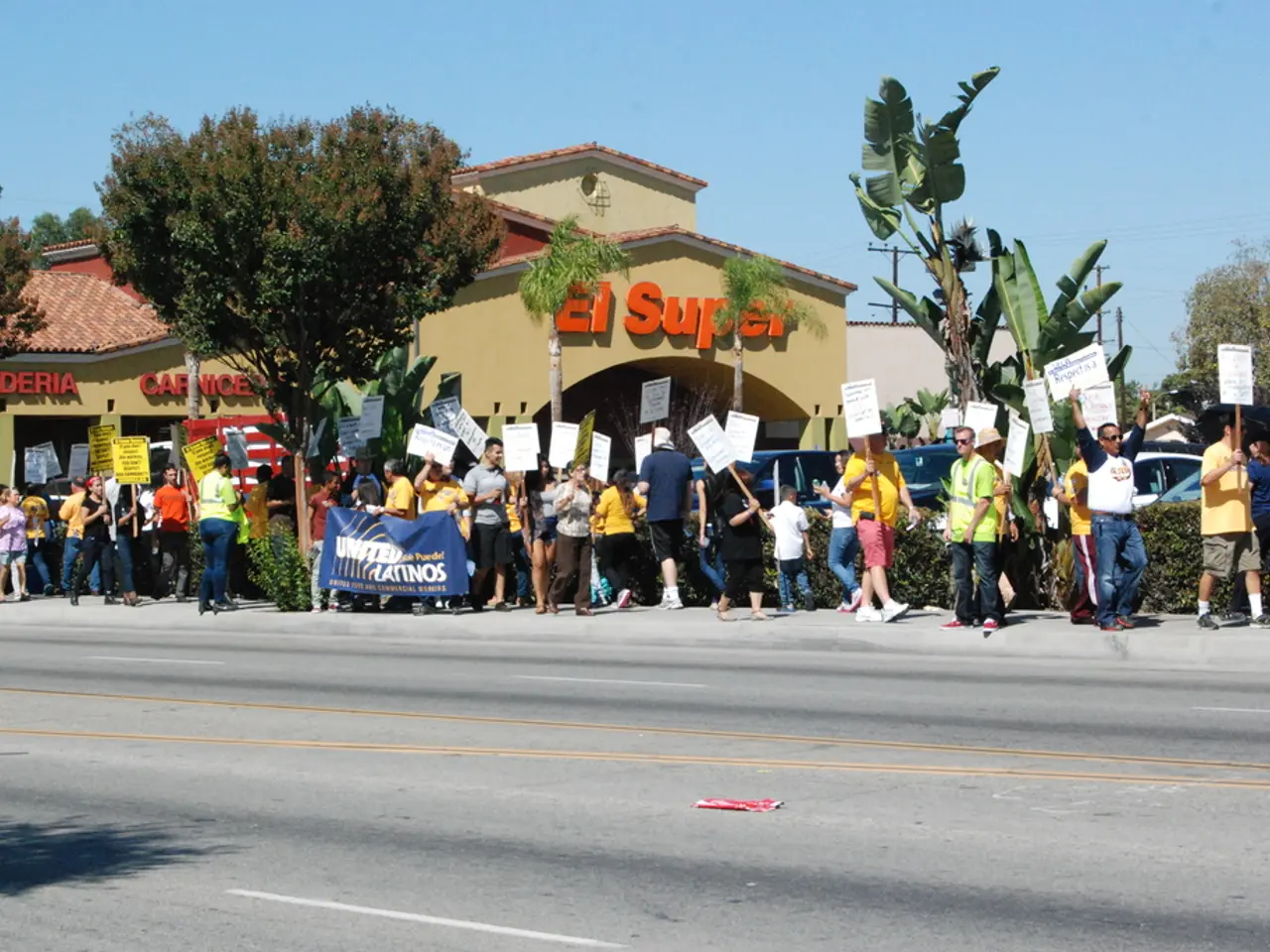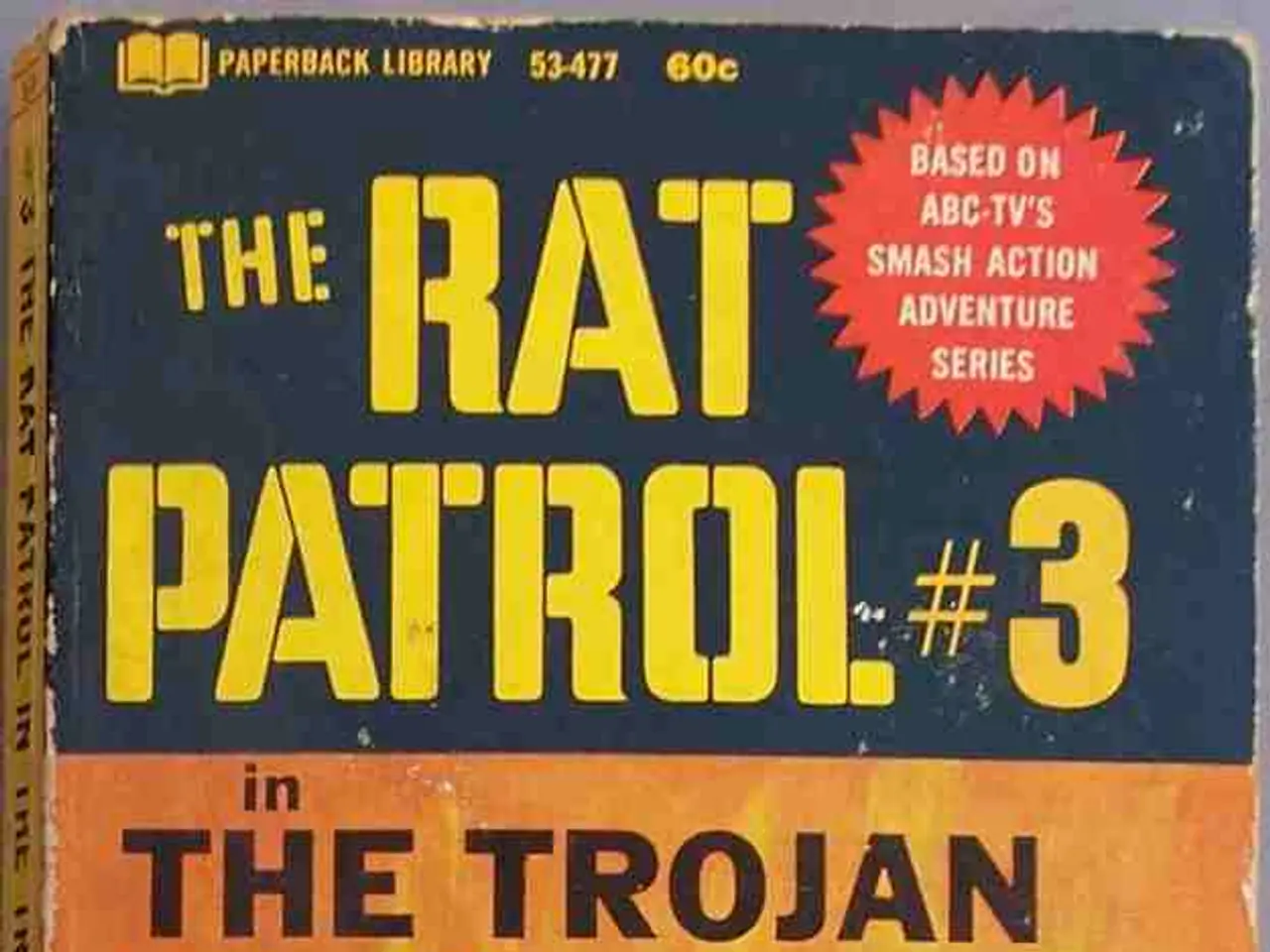"Global community skepticism towards U.S. President Trump's North Korea nuclear promises"
In the early days of his first term, President Donald Trump's rhetoric towards North Korea's leader Kim Jong Un was aggressive, including a threat to use nuclear weapons. This was not an isolated incident, as Trump also made statements that suggested a readiness for a possible nuclear conflict with Russia.
Amidst these tense exchanges, Trump ordered the deployment of three aircraft carrier strike groups near North Korea's coast and the redeployment of two nuclear submarines to "appropriate areas." However, military analyst and retired colonel Viktor Litovkin dismissed the claim of sending two more submarines as laughable, stating that strategic submarines are always on combat patrol.
This nuclear brinkmanship is not a new phenomenon, but rather a legacy of the Cold War era. The Soviet Union developed a system known as the "Dead Hand," or "Perimeter," as a deterrent to prevent a nuclear first strike. This automated nuclear launch control system, still believed to be operational, monitors indicators such as seismic activity, radiation levels, and military communications. If these suggest a nuclear attack and no response is received from command, "Dead Hand" can automatically or semi-automatically launch strategic nuclear missiles to retaliate.
The "Dead Hand" system officially entered service in January 1985 and is considered a "revenge machine" designed as a deterrent to prevent a nuclear first strike by ensuring mutual assured destruction. While originally intended to be fully automatic, later versions reportedly require final human approval before launching missiles to avoid accidental or inadvertent nuclear war. The system uses a specialized command missile that flies across Russian territory broadcasting launch orders to nuclear silos.
In the context of Russian-American relations, the "Dead Hand" reflects the intense strategic distrust and nuclear brinkmanship during the Cold War. Its existence underscores the risks of escalation and the catastrophic consequences of nuclear war, contributing to complex arms control negotiations such as the INF Treaty. Though official details remain classified, references to the "Dead Hand" by Russian officials in recent years have reignited concerns about nuclear tensions and the persistent threat of automated retaliation systems in the modern nuclear landscape.
Meanwhile, Russia has modernized its nuclear forces, with new missiles such as the "Sarmat," capable of flying 18,000 km, and the "Poseidon," a nuclear-powered torpedo that can stay in the ocean indefinitely and wait for a command to explode. Hans Kristensen, a nuclear programs expert at the Federation of American Scientists, states that Trump's nuclear statements create a "commitment trap," implying an increased likelihood of nuclear weapon usage in escalated situations with Russia.
Despite these tensions, negotiations and meetings between Trump and Kim Jong Un were the outcome of the nuclear threat. However, the U.S.'s nuclear arsenal is not without its vulnerabilities. The Ohio-class submarines are equipped with strategic missiles, but not every silo has a Trident ballistic missile, and the U.S. still has Minuteman missiles, over 40 years old. Furthermore, the development of the new Sentinel missile, for which former President Barack Obama allocated $2 trillion, remains in the project.
In conclusion, the strategic distrust between the U.S. and Russia, evident in the past and present, presents a complex and dangerous landscape. The "Dead Hand" system, a relic of the Cold War, serves as a stark reminder of the risks of nuclear war and the need for continued arms control negotiations. As the world watches the ongoing nuclear tensions, the hope is that diplomacy will prevail over the threat of mutual destruction.
- The ongoing war-and-conflicts between Russia and the United States, as seen in President Donald Trump's rhetoric, has led to policy-and-legislation focused on reducing nuclear arsenal and preventing nuclear war, such as the INF Treaty.
- In the realm of crime-and-justice, Hans Kristensen, a nuclear programs expert, warns that Trump's nuclear statements could create a "commitment trap," potentially increasing the likelihood of nuclear weapon usage in escalated situations with Russia.
- Amidst general-news headlines about military disputes and nuclear brinkmanship, the existence of the Dead Hand system, an automated nuclear launch control system developed by the Soviet Union, underscores the need for continued discussions on policy-and-legislation to prevent nuclear war and ensure global security.







